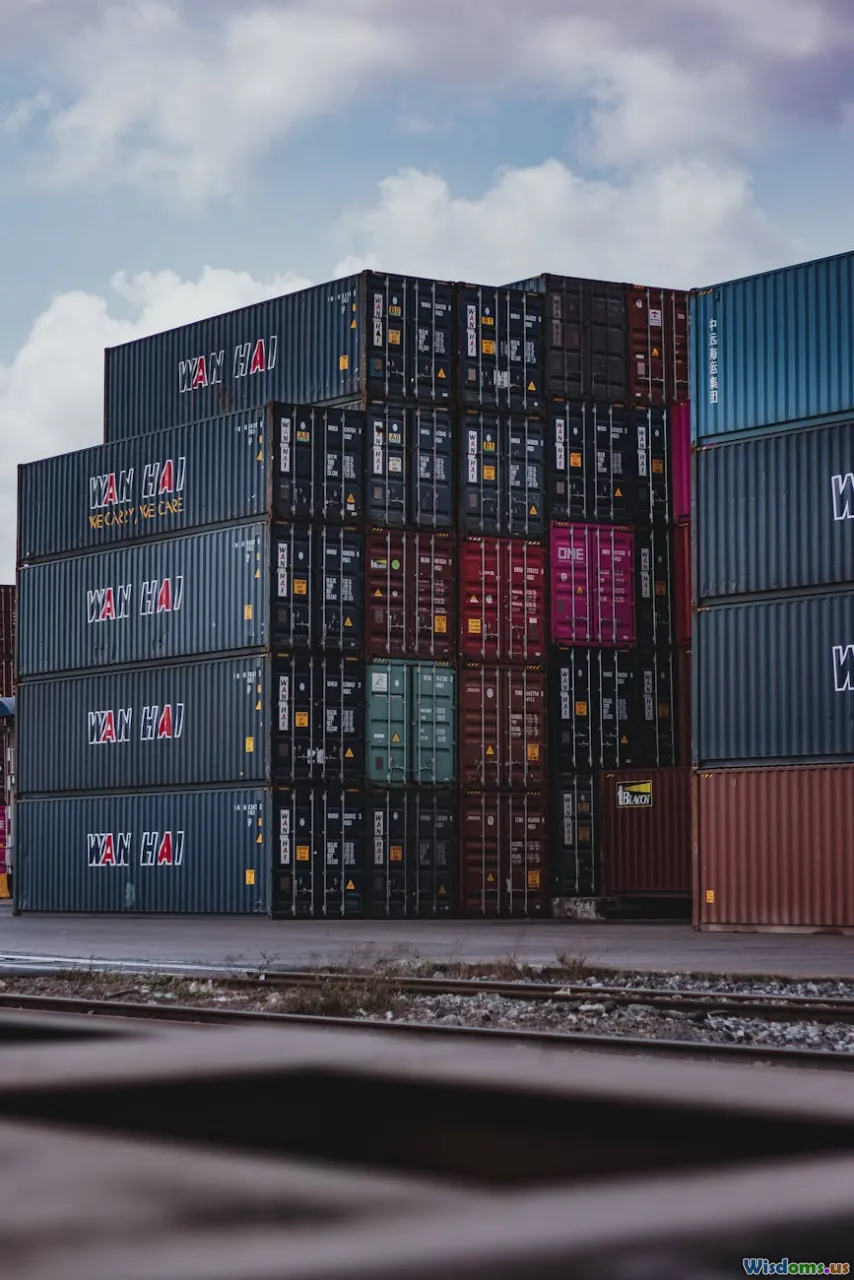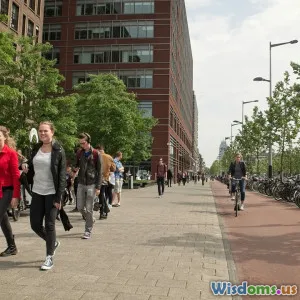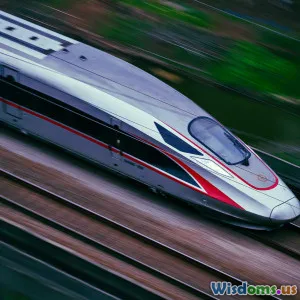
Get Ahead Ten Transportation Trends Reshaping Global Supply Chains
10 min read Explore ten transformative transportation trends revolutionizing global supply chains and how businesses can leverage them for competitive advantage. (0 Reviews)
Get Ahead: Ten Transportation Trends Reshaping Global Supply Chains
Introduction
In an ever-evolving global economy, the backbone of modern commerce—the supply chain—is continuously being challenged by rapid technological, environmental, and regulatory changes. Transportation, a critical component of supply chains, is at the forefront of this transformation. Companies around the world are feeling the pressure to adapt or risk falling behind. Understanding the latest transportation trends is no longer optional; it is essential to gaining a competitive edge.
From automation and digitization to sustainability and resilience, this article explores ten pivotal transportation trends reshaping global supply chains. We will delve deep into each, highlighting relevant data, examples, and actionable insights to illuminate the path forward.
1. Automation and Autonomous Vehicles
Automation is revolutionizing the way goods move. Autonomous trucks, drones, and automated guided vehicles (AGVs) are improving efficiency and reducing human error.
Autonomous Trucks
Companies like TuSimple and Waymo Freight are pioneering autonomous trucking, targeting long-haul routes. For instance, a 2023 pilot by TuSimple demonstrated that self-driving trucks could increase fuel efficiency by up to 25%, lowering operational costs significantly. This technology promises to address driver shortages, which the American Trucking Associations projects could reach a deficit of 160,000 drivers by 2030.
Drones for Last-Mile Delivery
Amazon's Prime Air and UPS Flight Forward have tested drone deliveries, slashing last-mile delivery times from days to mere hours in rural and urban areas. This innovation is especially impactful in areas with poor infrastructure.
Benefits
- Reduced labor costs and dependency
- Enhanced safety and reduced accidents
- Faster, predictable deliveries
2. Sustainability and Green Logistics
Environmental concerns are pushing companies toward cleaner transportation methods. Green logistics encompasses reducing carbon footprint, enhancing energy efficiency, and adopting alternative fuels.
Electric and Hydrogen-Powered Fleets
Major shippers such as DHL and FedEx are investing substantially in electric trucks and delivery vans. DHL's goal is to operate 70% of its first- and last-mile services with clean transport modes by 2030.
Hydrogen fuel cells are gaining traction for long-haul transport due to their high energy density. Hyundai’s Xcient Fuel Cell truck, with a range of over 400 miles, exemplifies this shift.
Carbon-Neutral Shipping
Shipping giants Maersk and MSC have initiated carbon-neutral ship routes utilizing biofuels and wind-assist technologies. As ocean freight contributes approximately 3% of global CO2 emissions, such efforts are pivotal.
Regulatory Impact
New regulations like the IMO’s target to reduce greenhouse gas emissions by 50% by 2050 are accelerating adoption of sustainable practices.
3. Digital Integration and IoT
The digital revolution in transportation is driven by integrating Internet of Things (IoT), blockchain, and advanced analytics, offering complete transparency and optimized operations.
Real-Time Tracking
GPS, RFID, and sensor technologies enable real-time tracking of goods, significantly improving inventory management. DHL reported a 15% reduction in shipment delays after implementing IoT-based visibility tools.
Blockchain for Transparency
Blockchain platforms like IBM’s TradeLens facilitate secure, immutable tracking of shipments across multiple stakeholders, enhancing trust and reducing fraud.
Predictive Analytics
Companies now utilize machine learning algorithms to forecast demand, anticipate disruptions, and optimize routes. UPS's ORION routing system reportedly saves the company 10 million gallons of fuel yearly by optimizing delivery routes.
4. Resilience Through Supply Chain Diversification
The COVID-19 pandemic exposed the vulnerabilities of highly centralized supply chains. Transportation adaptations now focus on diversification to mitigate risks.
Multimodal Flexibility
Businesses are employing diverse transport modes—air, sea, rail, and road—to circumvent disruptions. For example, when Pacific port delays grow, companies are rerouting through rail or smaller ports to maintain continuity.
Nearshoring and Regional Hubs
The trend toward nearshoring—moving production closer to end markets—is reshaping transportation networks. This shift reduces transit times and mitigates geopolitical risks. A study by Resilience360 found nearshoring can lower lead times by up to 30%.
5. Urban Logistics and Micro-Fulfillment
With urban populations swelling, last-mile delivery faces mounting challenges. Urban logistics solutions focus on micro-fulfillment centers and innovative delivery methods.
Micro-Fulfillment Centers
Retailers like Walmart and Ocado invest in automated micro-fulfillment centers located within city limits to expedite delivery times and reduce transportation distances.
Cargo Bikes and Electric Scooters
In congested cities, eco-friendly alternatives like cargo bikes provide flexible, emission-free last-mile deliveries, pioneered by firms such as DHL and Hermes.
Smart Lockers
Networks of smart lockers allow customers to pick up parcels at convenient locations, reducing failed delivery attempts.
6. Advanced Analytics in Fleet Management
Advanced data analytics in fleet management optimizes asset utilization, maintenance, and fuel consumption.
Predictive Maintenance
IoT sensors monitor vehicle health in real-time, preemptively identifying maintenance needs. This approach can reduce downtime by up to 30%, as reported by GE Transportation.
Dynamic Routing
AI-driven software adapts routing decisions based on real-time traffic and weather data, improving delivery efficiency and reducing costs.
7. E-commerce and the Delivery Boom
The e-commerce explosion demands rapid and reliable transportation to meet consumer expectations.
Increased Parcel Volumes
Statista reports that global e-commerce parcel delivery volumes grew by 16% in 2023 alone, stressing transport infrastructure.
Microhubs and Same-Day Delivery
Retailers employ localized fulfillment centers to support same-day or next-day delivery, critical for customer satisfaction and loyalty.
8. Regulatory Evolution and Compliance
Evolving regulations surrounding emissions, driver hours, and safety have substantial implications for transportation.
Emissions Standards
The Euro 7 emissions standards set to take effect in the EU (expected post-2025) will tighten pollutant limits for trucks and vans.
Hours of Service (HoS)
Regulatory limits on driver hours, such as the FMCSA’s HoS rules in the U.S., necessitate more efficient scheduling and sometimes promote automation.
Compliance impacts route planning, fleet composition, and operational practices.
9. Collaborative Logistics and Sharing Economy
Collaborative logistics reduces empty miles and optimizes resource utilization through shared platforms.
Freight Marketplaces
Platforms like Convoy and Uber Freight connect shippers with available carriers dynamically, enhancing trucking efficiency.
Shared Warehousing
Companies use shared warehouse spaces to adapt flexibly to fluctuating inventory levels, an approach popularized by startups like Flexe.
10. Workforce Transformation and Training
Human capital remains vital. With new technologies, workforce skills must evolve.
Upskilling Drivers and Operators
Training programs now emphasize digital tool proficiency and safety in automated environments.
Addressing Labor Shortages
Attractive benefits, better working conditions, and career paths are crucial to addressing driver shortages exacerbated by demographic shifts.
Conclusion
The transportation landscape underpinning global supply chains is in profound flux, driven by advancements in automation, sustainability, and digitalization amidst a backdrop of unpredictable geopolitical and economic challenges. Those companies that proactively embrace the ten trends outlined—including autonomous vehicles, green logistics, IoT integration, resilience strategies, urban logistics innovations, advanced analytics, e-commerce adaptation, regulatory compliance, collaborative logistics, and workforce development—stand to gain competitive advantages through enhanced efficiency, flexibility, and sustainability.
By investing in these transformative trends, businesses can not only mitigate disruptions but also unlock new value streams, ultimately supporting smarter, more resilient supply chains capable of thriving in today's complex global marketplace.
This article offers a detailed roadmap for those looking to ‘Get Ahead’ in the next era of transportation-driven supply chain evolution.
Rate the Post
User Reviews
Popular Posts


















